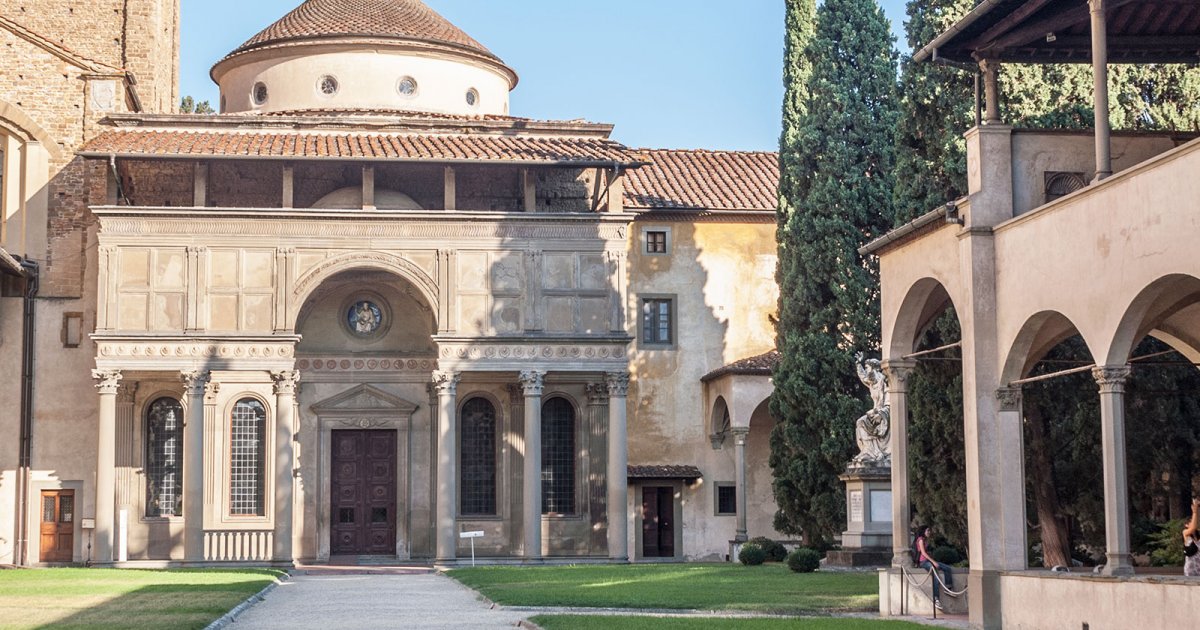SANTA CROCE, Pazzi Chapel
 Language: English / USA
Language: English / USA
After visiting the church and its frescoes, you certainly won't mind taking a break outside in the beautiful greenery of the peaceful cloisters.
The exit onto the first cloister is along the right side of the basilica. Of irregular shape and kept as a garden, it offers a magnificent view of the entire, great Gothic church. This cloister has also been used over the centuries for burials, but now you can see several sculptures here, including a work by Henry Moore under the canopy in the middle.
In this cloister you can visit Pazzi Chapel, named after the powerful Florentine family connected to the famous conspiracy I discuss in one of the Cathedral audio files. It is a pure example of humanism, and among the finest and most refined masterpieces of Filippo Brunelleschi. Its construction began three years before the great architect's death; in fact, the façade decorated with delicate sculptures has remained unfinished. The rectangular interior is surmounted by a circular dome. Look at the beautiful inlaid panels that cover the doors and the stupendous colored terracotta tondi of the great sculptor Luca della Robbia.
After admiring this chapel's perfect proportions and pure beauty, go from the cloister to the grandiose refectory of the Franciscan convent. At the back of the noble, vast 14th-century hall you can see a beautiful fresco from the same period: in the lower part you can recognize the Last Supper, and near that a large painting celebrating the Franciscan order's devotion to the Holy Cross in a symbolic form.
The refectory is part of the Museum where you can admire works of art and fragments of frescoes and sculptures linked to the basilica complex. Its highlight is undoubtedly the dramatic painting on a large panel, Crucifix by Cimabue. Giotto's master Cimabue was the most important Italian painter of the late 1200s: his Crucifixes were still static and linked to the Byzantine tradition, but already began to dramatically express the death of dying Christ.
Your walk through Santa Croce ends with the serene view of the Great Cloister built in the mid-1400s and its porticoes and loggias.
FUN FACT: Michelangelo died and was buried in Rome. Florence and his family asked for his remains, but in vain. So his nephew Leonardo went to Rome, stole the body and brought it back to his hometown, where he still lies today in Santa Croce.
And with this we have finished our tour of the Santa Croce complex in Florence. MyWoWo thanks you for staying with us, and will see you at the next Wonder of the World!



